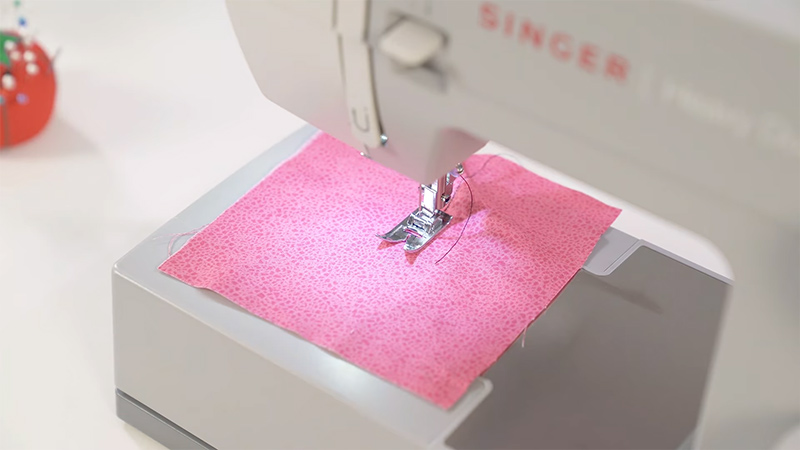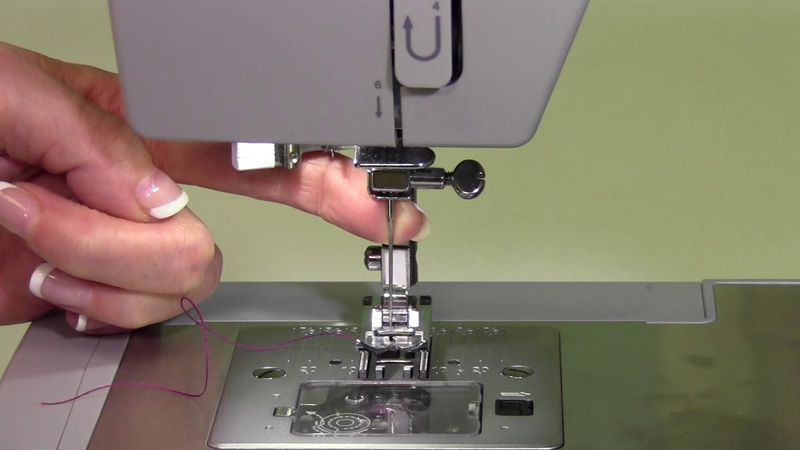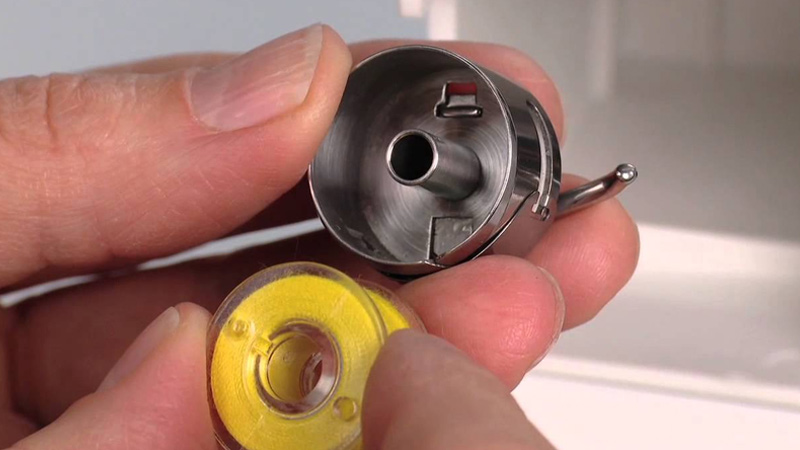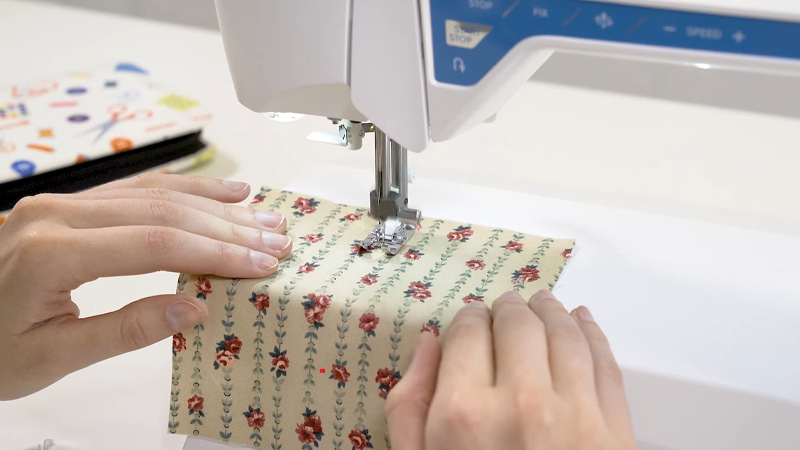Sewing enthusiasts often encounter the frustrating issue of thread shredding, where the thread unravels or breaks during the stitching process. This problem can disrupt the flow of your creative projects and hinder the overall sewing experience.
Delving into the root causes of thread shredding is essential for avid sewers to troubleshoot and enhance their crafting skills. So, what causes the thread to shred when sewing?
In this exploration, we will unravel the common culprits behind thread shredding, shedding light on the technical aspects and common mistakes that contribute to this vexing problem.
From needle selection to thread quality, tension issues, and fabric considerations, we will dissect the factors that can compromise the integrity of your stitches.
By gaining insights into these challenges, you’ll be better equipped to overcome thread shredding hurdles, ensuring smoother sewing sessions and impeccable results in your handmade creations.

What Causes Thread To Shred When Sewing?
Thread shredding, where the thread unravels or breaks during sewing, is a common problem that can impact the quality of your stitches and the overall success of your projects. Let’s explore the various factors that contribute to thread shredding.
Needle Selection: The Foundation of Stitching Success
One of the primary culprits behind thread shredding is improper needle selection. Using the wrong needle for your fabric can cause friction, leading to thread damage. Ensure that you match the needle type and size to the fabric you are working with.
For lightweight fabrics like silk or chiffon, choose a fine needle, while heavier fabrics like denim require a stronger, thicker needle. Regularly replace needles as they can become dull over time, contributing to thread shredding.
Thread Quality: Investing in Excellence
The quality of the thread you use significantly influences its performance during sewing. Low-quality or old threads are more prone to shredding.
Invest in high-quality threads suitable for your specific fabric and project. Check for any imperfections or knots in the thread before starting.
Storing thread in a cool, dry place can also prevent it from becoming brittle and prone to shredding. Regularly updating your thread collection ensures that you are working with threads at their optimal quality.
Tension Troubles: Balancing Act
Tension issues are notorious for causing thread problems. Incorrect tension can lead to excessive friction, resulting in thread shredding. Consult your sewing machine manual for guidance on adjusting upper and lower thread tension.
Conduct tension tests on scrap fabric before starting your project to ensure that the tension is balanced. Keep in mind that changes in fabric thickness may require tension adjustments, so stay vigilant and make necessary tweaks as you sew.
Fabric Matters: The Impact on Thread Performance
The type and thickness of the fabric you choose play a crucial role in thread behavior. Different fabrics exert varying levels of stress on the thread, affecting its durability. When working with lightweight or delicate fabrics, opt for a finer thread to reduce friction.
For heavy-duty fabrics, a thicker, more robust thread is advisable. Adjust your machine settings and needle accordingly to match the fabric’s characteristics, minimizing the risk of thread shredding.
Machine Maintenance: A Stitch in Time
Regular maintenance of your sewing machine is essential for preventing thread shredding. Dust, lint, and debris can accumulate in the machine, affecting its performance.
Clean the bobbin area, and feed dogs, and tension discs regularly. Lubricate moving parts as recommended in the manual. A well-maintained machine ensures smoother stitching, reducing the likelihood of thread-related issues.
Practical Tips for Troubleshooting
To avoid the thread fraying at the needle issue further, here’s what you need to do:
Conduct Regular Stitch Tests
Before starting a new project, perform stitch tests on scrap fabric. This allows you to identify any tension issues, needle problems, or thread irregularities before they impact your main project.
Check Needle Size and Type
Always use the correct needle size and type for the fabric you are working with. Consult your sewing machine manual or needle packaging for guidance. Remember to change the needle regularly to ensure optimal performance.
Examine Thread Quality
Inspect your thread for knots, imperfections, or signs of wear. Invest in high-quality threads that match the requirements of your specific project. Replace old or damaged threads to prevent shredding issues.
How to Fix Thread Shredding Issues on Your Sewing Machine?
Thread shredding on your sewing machine can be a frustrating obstacle to your creative endeavors. However, with a systematic approach, you can troubleshoot and address the root causes of the problem.
Here’s a step-by-step guide to help you fix your sewing machine if it’s experiencing thread shredding issues.
Check Needle Compatibility

The first and most crucial step is to assess your needle. Ensure that you are using the correct needle type and size for the fabric you are working with.
A needle that is too large or too small can cause excessive friction, leading to thread shredding. Change the needle if it’s dull or bent, as a worn-out needle can contribute to the problem.
Inspect Thread Quality
Examine the thread you are using for any imperfections, knots, or signs of wear. Low-quality or old threads are more prone to shredding.
Invest in high-quality threads that match the requirements of your specific project. Replace the thread if you find any issues to prevent further complications.
Evaluate Thread Tension
Incorrect tension is a common culprit for thread shredding. Consult your sewing machine manual to understand how to adjust both upper and lower thread tension.
Perform tension tests on scrap fabric before starting your main project. If you notice any irregularities in the stitches, make the necessary adjustments to achieve balanced tension.
Choose the Right Thread for the Fabric
Consider the characteristics of your fabric when selecting thread. The thickness and type of thread should complement the fabric to minimize friction and reduce the risk of shredding. Adjust your machine settings accordingly to match the thread and fabric combination.
Verify Needle and Thread Compatibility
Ensure that the needle and thread are compatible. Using a heavy thread with a fine needle or vice versa can lead to shredding. Make sure that the thread passes easily through the eye of the needle without excessive resistance.
Examine Bobbin and Bobbin Case

Inspect the bobbin and bobbin case for any thread tangles, debris, or damage. Clean the bobbin area thoroughly, removing any accumulated dust or lint. Ensure that the bobbin is wound correctly and placed in the bobbin case according to your machine’s specifications.
Check Machine Settings for Stitch Type
Certain stitch types may require specific machine settings. If you are experiencing thread shredding with a particular stitch, review your machine’s manual to confirm the recommended settings for that stitch. Adjust the settings accordingly to ensure smooth stitching.
Clean and Maintain Your Sewing Machine
Regular maintenance is crucial for preventing thread-related issues. Clean the bobbin area, feed dogs, and tension discs regularly to remove accumulated lint and debris. Lubricate moving parts as recommended in your machine’s manual to ensure smooth operation.
Test on Scrap Fabric
Before starting your main project, perform test stitches on scrap fabric. This allows you to identify and address any remaining issues before working on your actual project. Pay close attention to the stitches and make adjustments as needed.
Seek Professional Assistance if Needed
If despite your efforts, the problem persists, consider seeking professional assistance. A sewing machine technician can inspect your machine for any underlying issues that may require specialized knowledge or replacement parts.
How to Prevent Thread Shredding at Needle?
Thread shredding can be a persistent issue during sewing, causing frustration and impacting the quality of your stitches.
However, by implementing preventive measures, you can significantly reduce the likelihood of thread shredding and enjoy a smoother sewing experience.
Here’s a comprehensive guide to help you prevent thread shredding when sewing. Instead of asking why is my thread shredding, follow these measures:
Choose the Right Needle

Selecting the appropriate needle for your fabric is crucial in preventing thread shredding. Use a fine needle for lightweight fabrics like silk and a thicker, stronger needle for heavy fabrics such as denim.
Regularly replace needles to ensure they are sharp and in optimal condition, as a dull needle can contribute to thread issues.
Invest in Quality Thread
High-quality thread is less likely to shred during sewing. Choose threads that match the requirements of your project and the characteristics of your fabric. Inspect the thread for imperfections, knots, or signs of wear before starting.
Investing in good-quality thread contributes to the overall success of your sewing projects.
Mind Your Tension
Maintaining proper tension is crucial for preventing thread issues. Consult your sewing machine manual to understand how to adjust both upper and lower thread tension.
Perform tension tests on scrap fabric before starting your main project, and make necessary adjustments based on the fabric and thread combination you are using. Balanced tension reduces friction, minimizing the risk of thread shredding.
Match Needle and Thread Size
Ensure that the size of the needle matches the thickness of the thread. Using a needle that is too small for the thread or vice versa can lead to shredding.
Verify that the thread passes easily through the eye of the needle without excessive resistance. Proper matching of needle and thread size promotes smooth stitching.
Consider Fabric Characteristics
Different fabrics exert varying levels of stress on the thread. When choosing thread, consider the characteristics of the fabric you are working with. Use finer threads for lightweight fabrics and thicker threads for heavier materials.
Adjust your machine settings accordingly to accommodate the specific needs of each fabric type, reducing the risk of thread shredding.
Regularly Clean Your Sewing Machine
A clean sewing machine operates more efficiently and helps prevent thread-related issues. Regularly clean the bobbin area, feed dogs, and tension discs to remove accumulated dust and lint.
Follow your machine’s manual for proper cleaning and maintenance procedures. Lubricate moving parts as recommended to ensure smooth operation.
Check for Bobbin and Needle Issues
Inspect the bobbin and bobbin case for any irregularities. Ensure that the bobbin is wound correctly and inserted according to your machine’s specifications.
Check for any burrs or nicks on the needle, as these can cause thread shredding. Replace the needle if it shows signs of damage.
Use the Right Stitch Type
Certain stitch types may be more prone to causing thread shredding. If you notice issues with a particular stitch, consult your machine’s manual to confirm the recommended settings for that stitch.
Adjust your machine accordingly to ensure smooth stitching without compromising the integrity of the thread.
Test Stitches on Scrap Fabric
Before starting a new project, perform test stitches on scrap fabric. This allows you to identify any potential issues with tension, needle, or thread before working on your main project. Make adjustments as needed based on the test stitches to ensure optimal results.
Store Threads Properly
Proper storage of threads is essential for maintaining their quality and preventing shredding. Store threads in a cool, dry place away from direct sunlight.
Avoid exposing threads to extreme temperature fluctuations, as this can affect their texture and performance.
FAQs
what causes a thread to shred when sewing?
Thread shredding can result from factors like using the wrong needle, improper tension settings, or low-quality thread. Ensure you match the needle to the fabric, adjust tension correctly, and choose high-quality thread.
Is the type of thread I use causing shredding in my sewing projects?
Yes, thread quality matters. Low-quality or old thread can lead to shredding. Invest in good-quality threads suitable for your fabric and storage conditions.
Can needle choice really affect thread shredding?
Absolutely. A blunt or inappropriate needle can cause thread shredding. Choose the right needle size and type for your fabric, and replace needles regularly.
How does fabric choice impact thread shredding?
Fabric type and thickness affect thread performance. Sharp, appropriate needles and adjusting your machine settings for different fabrics can minimize shredding issues.
Are tension problems a common cause of sewing machine shredding thread?
Yes, incorrect tension is a frequent culprit that makes your machine shred thread. Ensure proper upper and lower thread tension by referring to your machine’s manual and conducting tests on scrap fabric before starting your project.
Conclusion
Understanding the intricacies of thread shredding in sewing empowers enthusiasts to elevate their craft. By addressing issues such as needle selection, tension discrepancies, and fabric compatibility, one can mitigate the frustration of unraveling threads.
Remember, a thoughtful approach to these factors ensures the smooth flow of your stitching process, leading to impeccable results in your creative endeavors.
As you navigate the world of sewing, armed with insights into the causes of thread shredding, you’ll be better equipped to troubleshoot and refine your techniques.
Embrace the knowledge gained from this exploration, and let it serve as a guide in overcoming challenges, enabling you to enjoy a more seamless and enjoyable sewing experience.
With attention to detail and a proactive mindset, you can turn thread-shredding hurdles into opportunities for growth in your sewing journey.
Leave a Reply